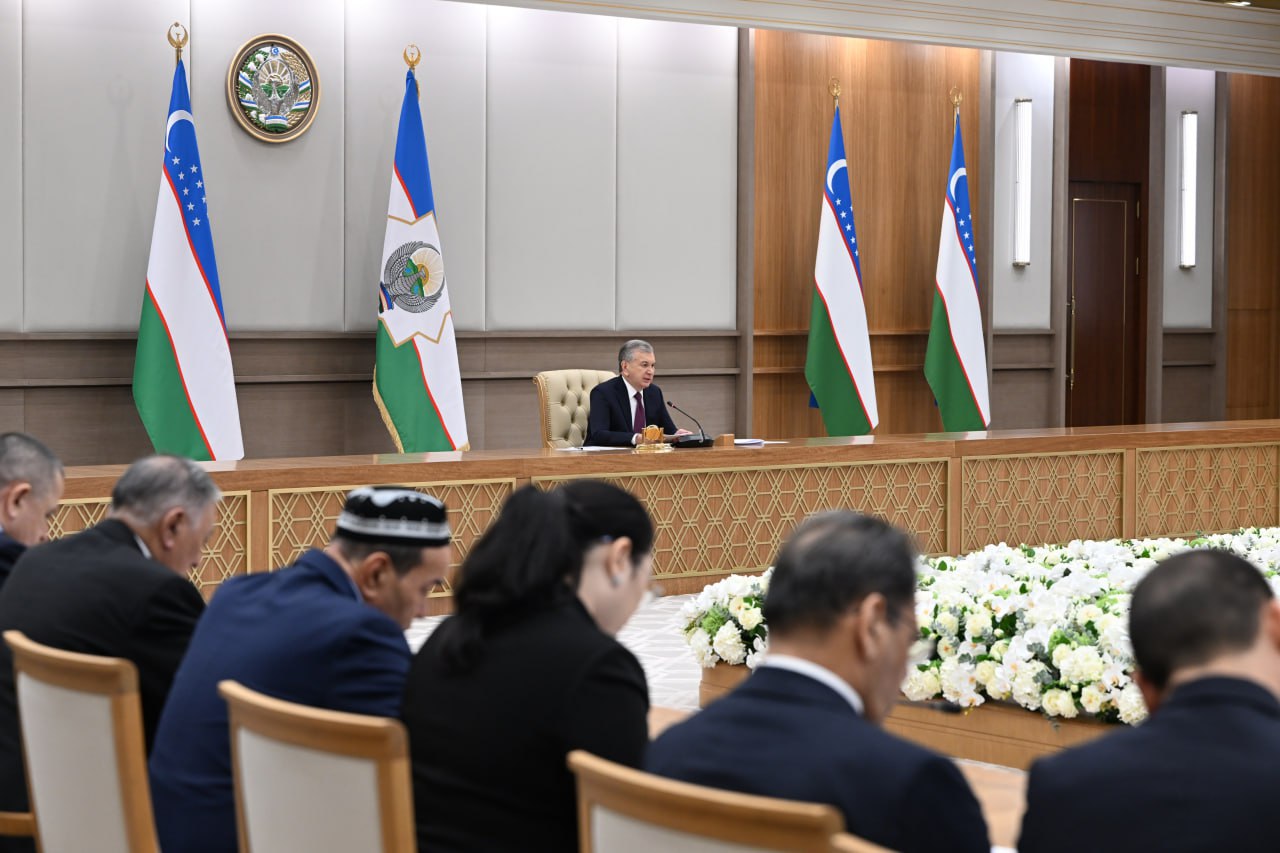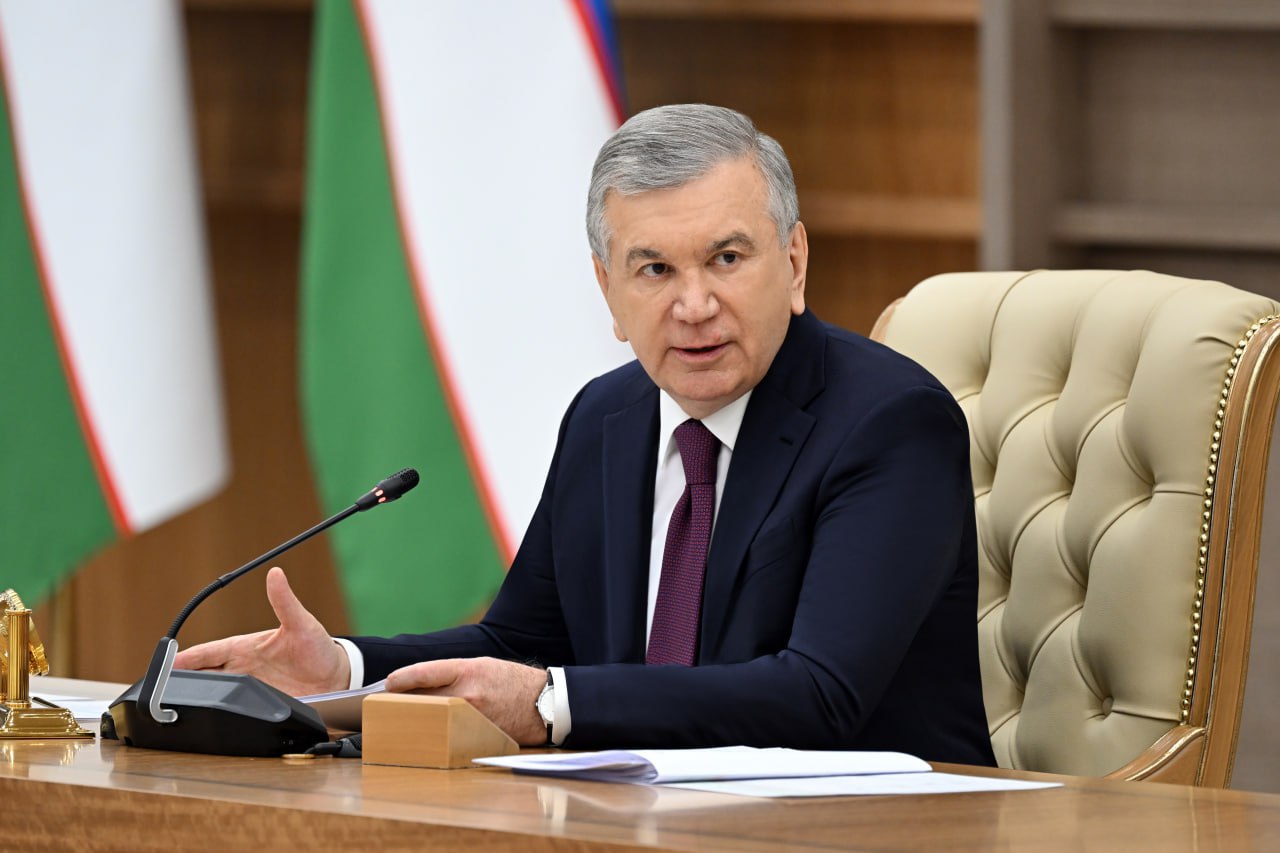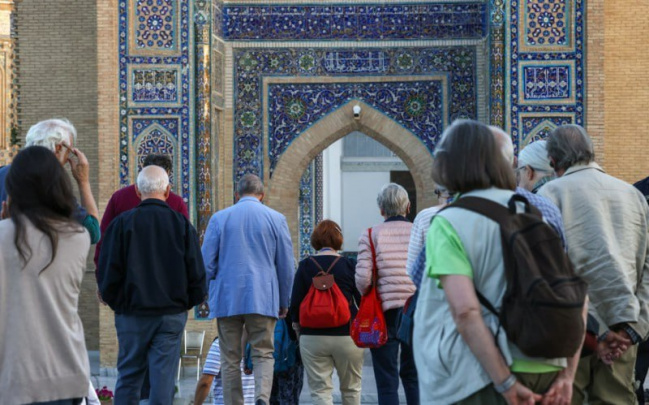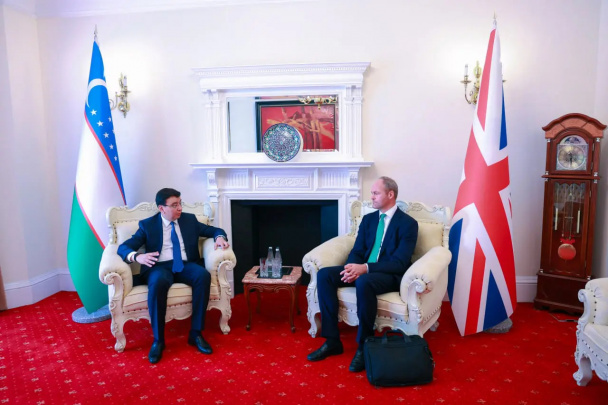Khiva's tourism growth struggling due to poor air connectivity - Mirziyoyev
A video conference chaired by President Shavkat Mirziyoyev was held to discuss key tasks for developing the service sector.

Photo: Presidential press service
It was highlighted that the large-scale program initiated three years ago to develop the service sector is now yielding significant results.
Over the past seven years, income levels and purchasing power have doubled, leading to increased demand for new types of services. As a result, an additional 1.5 million people have secured stable incomes within the service sector. The total volume of services has grown from $19 billion in 2018 to $65 billion—an increase of 3.5 times.
Particularly notable progress has been observed in IT, financial services, tourism, aviation, education, and healthcare.
However, the president noted that ministers and governors are taking different approaches to service development, and collaboration remains insufficient. They were urged to align their efforts with growing demand and seek innovative solutions.
One major challenge highlighted was Khorezm’s tourism potential. Despite plans to attract six million local and foreign tourists, the region remains underdeveloped in terms of transportation. Currently, only 52 weekly flights and 23 train routes serve Khorezm, and annual passenger traffic has not exceeded 800,000. Many tourists traveling to Bukhara and Samarkand choose to leave rather than visit Khiva due to the lack of direct flights.
Healthcare development also faces obstacles. While the number of private clinics has tripled in the last seven years, many struggle with the lengthy registration process for imported medical equipment, which can take up to six months. Entrepreneurs have called for a simplified procedure to accelerate the sector’s growth.
Similarly, opening medical laboratories in the regions requires lengthy accreditation processes, causing significant delays. Initial estimates suggest that at least 10 entrepreneurs in each region are ready to invest $1 million in establishing laboratories, provided that bureaucratic hurdles are reduced.
Meanwhile, private sector investments in healthcare, aviation, and energy have exceeded $20 billion. However, similar large-scale projects are virtually absent in critical areas such as drinking water, sewage, and road construction. Many local entrepreneurs have expressed willingness to invest $1 billion and create 10,000 jobs if favorable conditions are provided.

Trade and service infrastructure have also seen mixed progress. Three years ago, incentives were introduced for the construction of trade and service centers exceeding 5,000 square meters. Since then, 209 such facilities have been built, yet progress remains unsatisfactory in Bukhara, Jizzakh, Kashkadarya, and Navoi regions.
In the livestock sector, $700 million has been secured from international financial institutions over the past four years, with an additional $350 million expected this year. This will create demand for at least 20,000 veterinarians. In Bukhara alone, the shortage of veterinarians is estimated at 250. By the end of the year, private veterinary and para-veterinary services are expected to increase fivefold.
Disparities in service sector development were also highlighted. Last year, Nukus district provided services worth 363 billion UZS, marking a 22% increase. However, in Gulistan district, which has twice the population of Nukus, service volume was 30 billion UZS lower.
Other regional challenges include:
- In Namangan city, the per capita value of services is under 13 million UZS, compared to 33 million UZS in Jizzakh, indicating a strong "shadow economy."
- IT services remain underdeveloped in Nishan, Yangikurgan, and Narpay districts.
- Financial service volumes have declined in Samarkand, Yangiyer, Mirzobod, and Mirzachul.
- Trade is not increasing in Karshi, Jomboy, Urgut, Urganch, and Uchtepa.
- Medical services have decreased in seven districts of Fergana.
To address these issues, ministers and governors were urged to continually seek new service sector opportunities.
By the end of 2025, the goal is to increase service sector volume by 15%, reaching $82 billion, and expand service exports to $8.5 billion. A key milestone is to secure stable incomes for 2.5 million people in the sector.
Recommended
List of streets and intersections being repaired in Tashkent published
SOCIETY | 19:12 / 16.05.2024
Uzbekistan's flag flies high on Oceania's tallest volcano
SOCIETY | 17:54 / 15.05.2024
New tariffs to be introduced in Tashkent public transport
SOCIETY | 14:55 / 05.05.2023
Onix and Tracker cars withdrawn from sale
BUSINESS | 10:20 / 05.05.2023
Latest news
-
Direct flight from Tashkent to the Maldives — every Sunday
SOCIETY | 09:00
-
Hackers steal nearly 3 billion UZS from bank account in Jizzakh
SOCIETY | 19:32
-
Uzbekistan’s gold giant NMMC doubles revenue in H1 2025, expands mining operations and sustainability efforts
BUSINESS | 19:31
-
Uzbekistan establishes diplomatic relations with Eritrea
POLITICS | 17:46
Related News

18:47 / 28.06.2025
Tourist arrivals in Uzbekistan surge by 46% in early 2025

12:48 / 28.06.2025
Two emergency officers in Khorezm arrested for bribery

15:18 / 26.06.2025
Bolt considers Uzbekistan market entry with pilot project

11:55 / 26.06.2025



